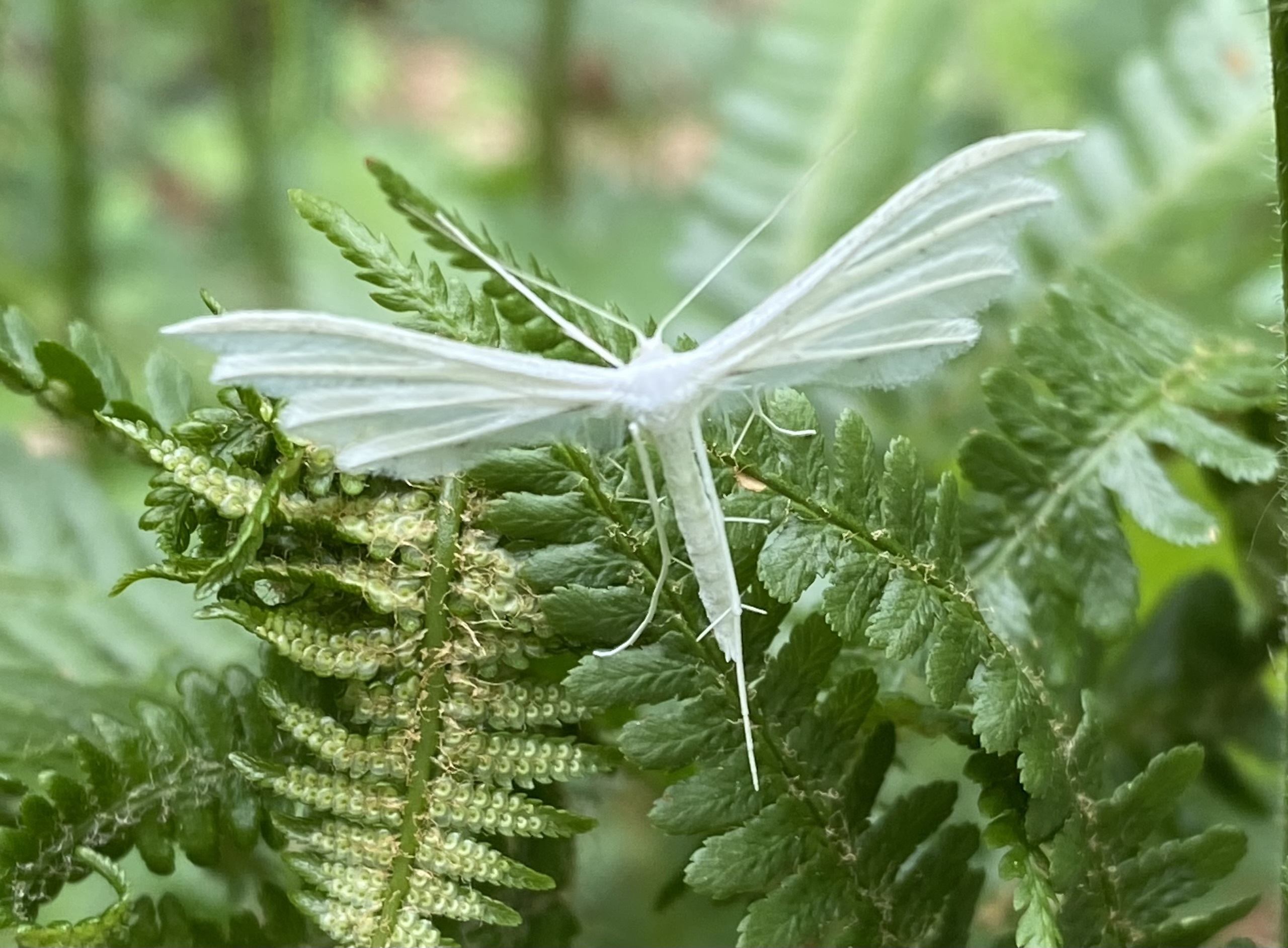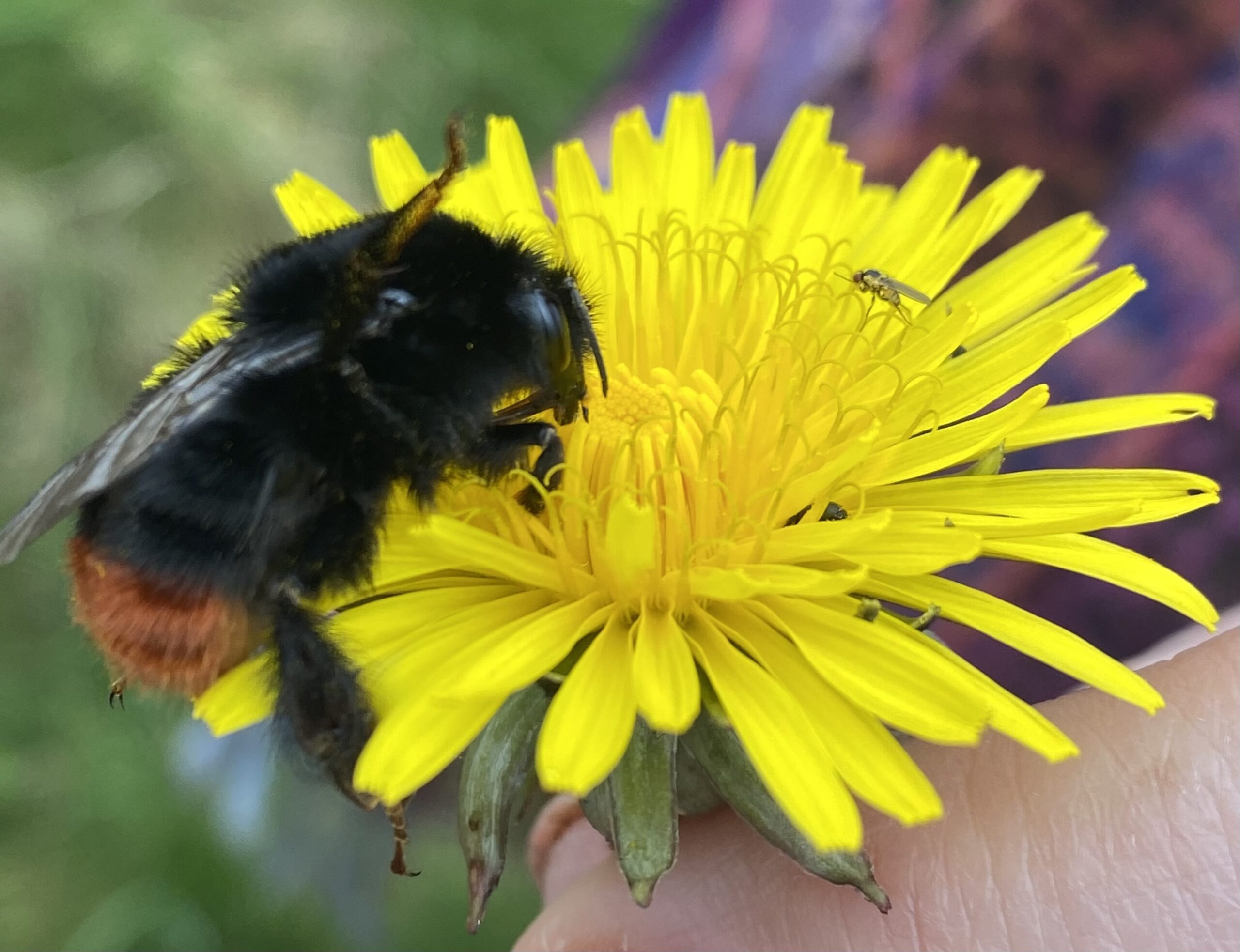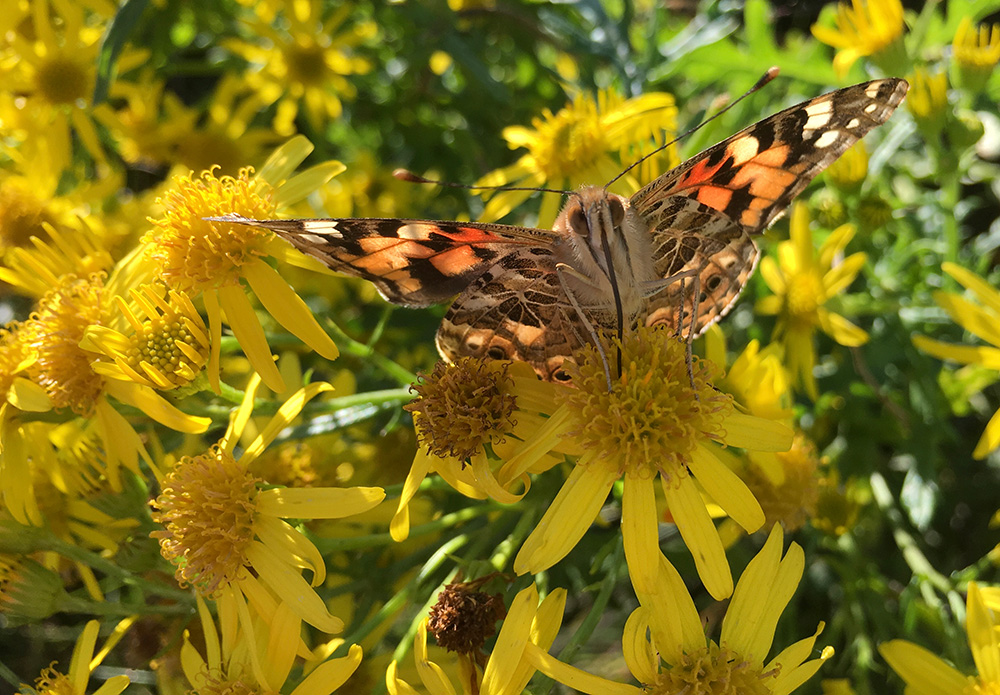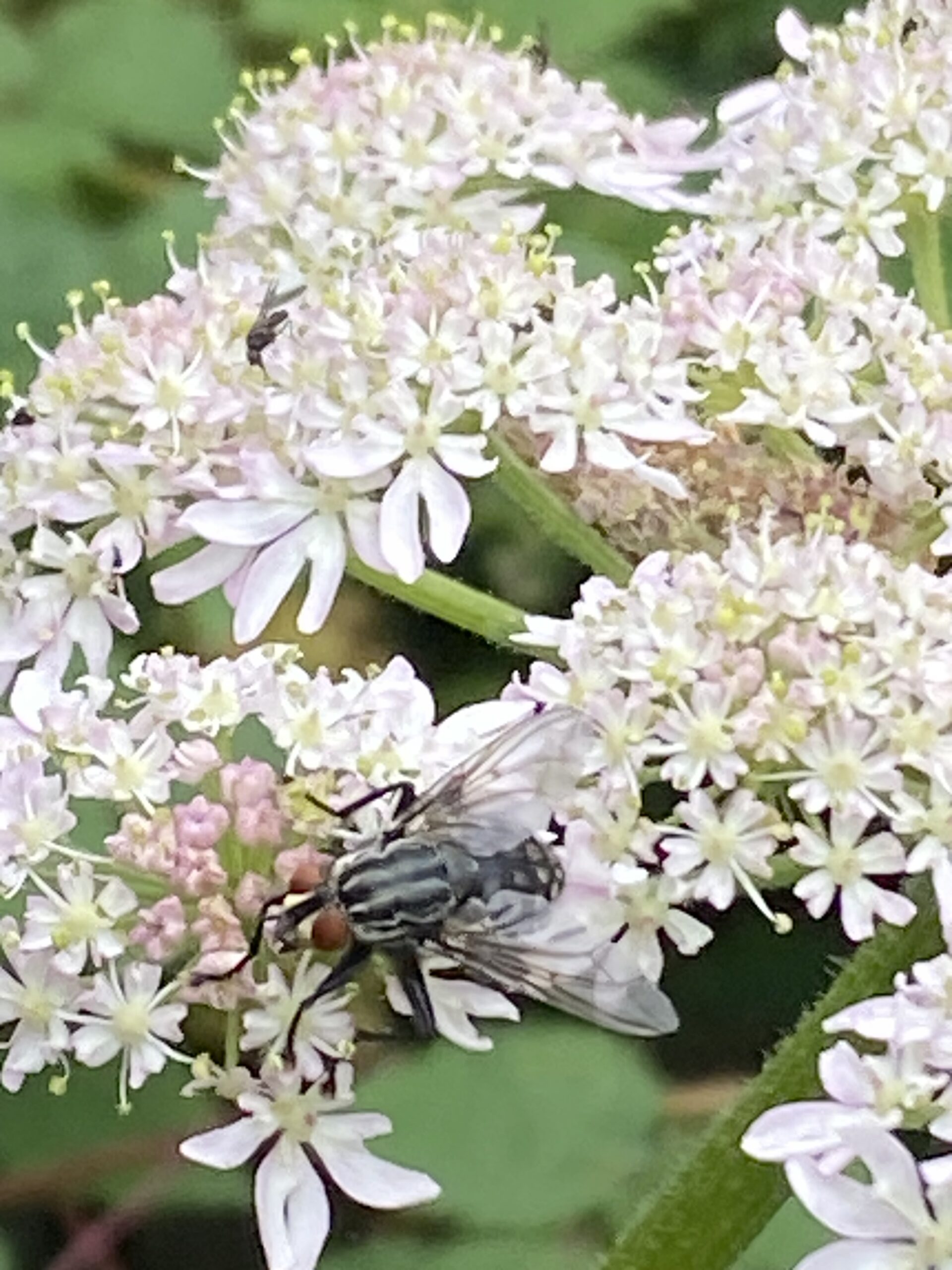Don’t get despondent if there are weeds on your patch. Most are wildflowers and have a vital role for our pollinators and insects.

c.Martin Mulchinock
In my world there is no such thing as a weed. Weeds are wildflowers. Many of our wildflowers evolved side by side with their pollinators or other creatures that depend on them. Nettles are a great case in point. While you might not want a nettle bed in your garden, most gardens have room for a patch of these essential plants. Not only are they larval food plant for some of our favourite butterflies, they are also baby food for many moths and attract aphids that are food for ladybirds and ladybird larvae. Even the nettle seeds are food for our seed eating birds. In fact, nettles are thought to support forty insect species. Everything has a place in the food chain. And we can use the spring nettle tops for pesto, soups and more, or create a nettle soup to feed our plants.
But while most of us know about nettles, many of our other ‘weeds’ have an important role too. It’s time to rethink our take on weeds and embrace them as wildflowers.
Here are five weeds that you might hate, but are vital for some of our wildlife.
Bindweed

c.Jean Vernon
Right now, the hedge bindweed is in flower in my garden. It has already dragged my plants to the ground and is clambering over them, creating a lush green carpet, seasoned with white trumpets. There is too much to deal with and I like to leave some of it because the flowers are rich in pollen and nectar for the pollinators. There are two types of bindweed. Hedge bindweed (Calystegia sepium or Convolvulus sepium) with its white trumpets and the smaller field bindweed (Convolvulus arvensis) with pink and white stripes.
Now I must admit, bindweed can be a right pain in and around the garden. And it is actually really hard to remove it. So, I have sort of given up. But not for the reasons you think. Last summer I found the most beautiful moth in my garden. I had never seen it before. It looked like a fairy or an angel and when I looked it up, I discovered it was White Plume Moth. And it’s larvae feed on bindweed. But there are other moths that need this tiresome plant as baby food. The convolvulus hawk moth caterpillars need hedge bindweed as a food plant. Elephant hawk moths and the scarce rosy wave moth also feed on bindweed, not to mention some beetles. So, before you strip your garden of bindweed, spare a thought for these incredible creatures.
Dandelion (Taraxacum officinale)

c.Jean Vernon
You might not want dandelions popping up in the cracks between your paving, but the pollinators do, especially in early spring when there is so little in flower for them. You might think you’ve got lots of plants for pollinators out in flower, but you need to remember that different pollinators have different length tongues and they can’t all feed from the same flowers. Dandelions are virtual dinner plates and landing pads for our pollinating friends offering copious nectar and pollen too. But what is great about it is that it flowers for weeks, the flowers can be accessed by most tongue lengths and the seeds are food for the seed eating birds like the finches. Not to mention that it’s edible too, though I’m told it’s better blanched and that root coffee substitute is an acquired taste. I’ve also heard that the garden fairies are rather partial to dandelion wine!
Rosebay Willow Herb (Chamaenerion angustifolium)

c.Jean Vernon
At the back of the border this tall perennial wildflower bring nectar rich joy to the pollinators and the flower bed. It’s a native wildflower, but it spreads widely and some consider it to be a ‘weed’. Personally, I love it. It’s also available in white! This plant is a survivor and quicky colonises bare ground via it’s fluffy seeds that are wind distributed far and wide. One plant can produce 80 000 seeds. Not only are the flowers rich in nectar but this plant is baby food for one of my favourite moths, the Elephant Hawk Moth, a pink and lime green delight that has caterpillars that resemble elephant trunks (hence the name). But there are other moth larvae (that also become pollinators) that feed on the plants too like the bedstraw hawkmoth. It’s a pretty flower and one I have picked for informal flower posies.
Ragwort (Jacobaea vulgaris, syn. Senecio jacobaea)

c.Jean Vernon
Ragwort is a really, really bad plant. Or so we are led to believe. But what if I told you that at least thirty insect species rely entirely on this plant for their survival and that ten of those are rare? It’s a food plant for 75 species of insects. Not only that but over a hundred of our precious pollinator species feed on the rich nectar that the ragwort flowers produce. Without ragwort dozens of species of insects would cease to exist. Virtually all the tiger moth caterpillars eat it. The cinnabar moth, which actually naturally controls ragwort, is dependent on it. The cinnabar moth is totally dependent on just this plant and that makes it fascinating. It feeds as a caterpillar on the toxic flowers and foliage of the ragwort plant. The toxins, types of heart stopping alkaloids, are taken into the body of the caterpillar making them poisonous to eat. They make no secret of this as they sport one of the most dramatic warning-dress of their kind, bright orange and deep black stripes screaming danger and stop. And the toxins are also present in the equally dramatic looking adult moths. Its blood red underwings and red spotted and striped, black forewings have a distinct Dracula appearance and again ward off predators. Of course, it is a danger to livestock if eaten fresh in the field, but it tastes really horrible and most herbivores avoid it, unless there is nothing else to eat. The biggest problem is when the meadow is cut and the dried hay or silage contains ragwort, then it becomes more difficult to detect and will poison livestock if it is fed to them. But away from horses and livestock the presence of ragwort is considered to be important as a nectar source for pollinators and a host plant for a number of rare invertebrates that cannot feed on anything else. It is also a native UK plant and where it grows on uncultivated land and is doing no harm, could, perhaps, be allowed to grow
Hogweed (Heracleum sphondylium)

c.Jean Vernon
Before you get worried hogweed is NOT the same as GIANT hogweed (Heracleum mantegazzianum). Giant hogweed is huge and potentially dangerous. It is not native, but is a close relative of cow parsley. Its sap can cause burns and blisters.
Hogweed however, is a different beast entirely, similar in looks but much more friendly and it is attractive to a range of pollinating insects, especially the short-tongued hoverflies, flies and wasps. These creatures need a source of nectar to fuel their day-to-day activity and the large flat umbels of hogweed flowers are ideal. And actually it’s quite stunning at the back of the border in summer, when its creamy white flowers are open.










